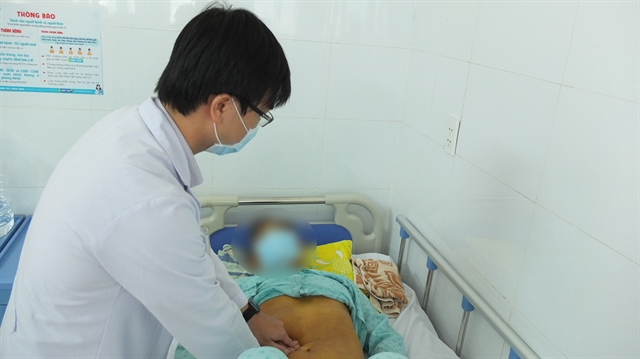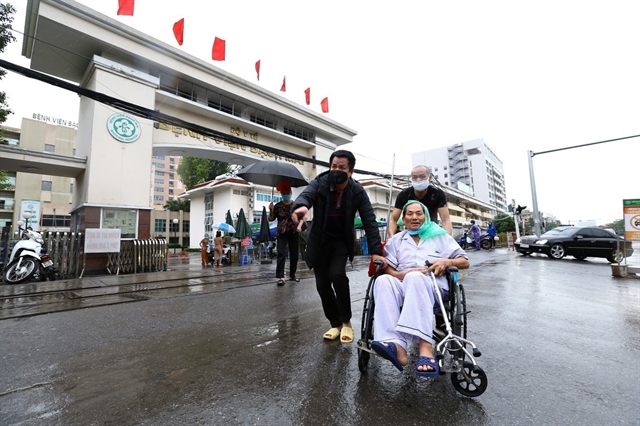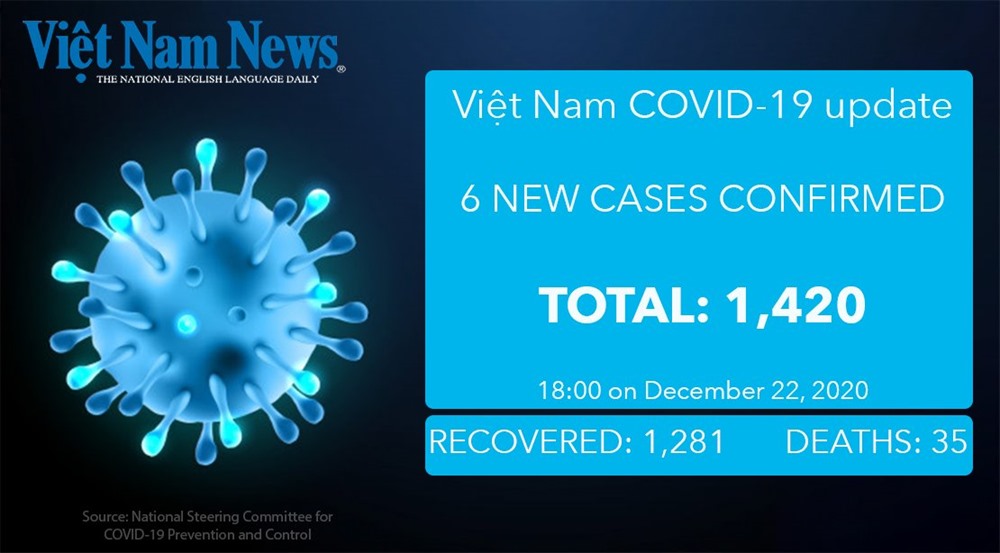

|
| A doctor at Bình Dân Hospital in HCM City examines a patient in the gastroenterology and hepatology department. — Photo courtesy of the hospital |
Gia Lộc
HCM CITY — A 60-year-old man from HCM City recently visited Bình Dân Hospital in the city for treatment because he had been suffering from abdominal pain and intensely itchy skin for 10 days.
His skin and eyes had been yellow for a long time. At the hospital, doctors examined him and said that he had intrahepatic bile duct cancer and prescribed surgery.
Dr Võ Văn Hùng, deputy head of the gastroenterology and hepatology department at Bình Dân Hospital in HCM City, said that people with jaundice should come to hospitals for treatment because it could be a symptom of other diseases, including biliary tract cancer.
“If they are not treated, patients with biliary tract cancer die within three to six months due to liver failure and the cancerous cells spreading to other parts in their body,” Hùng said.
“This cancer is not as common as liver cancer, but it is often detected at late stages, leading to influences on treatment and the survival rate of patients,” he added.
According to a study by Byung-Woo Kim from the National Cancer Center in South Korea and his colleagues published last year in PubMed, a database created by the National Library of Medicine, five-year survival rates are 30.0 per cent for gallbladder cancer, 27.8 per cent for extrahepatic bile duct cancer, and 15.9 per cent for intrahepatic bile duct cancer.
The study was conducted of 86,134 patients with biliary tract cancer selected from the National Health Information Database in South Korea.
Hùng said: “Early detection of biliary tract cancer is difficult and most cases have cancerous cells spread to the liver’s important blood vessels when the cancer is detected, leading to difficulty removing all the cancerous cells completely."
In 2018, Việt Nam had 502 new gallbladder cancer incidences, according to global cancer database GLOBOCAN 2018.
“Chronic infections, parasitic infections, exposure to chemicals used in the rubber industry, biliary cysts, congenital cirrhosis, primary fibrosis cholangitis, and ulcerative colitis are factors for developing biliary tract cancer. The cancer in patients with ulcerative colitis tends to be more severe,” Hùng said.
Treatment
Radical surgery is the only method to improve patients’ survival rate, according to Hùng. But the rate of radical surgery is low because more than half of cases have metastasized to the peritoneal cavity or have distant metastasis.
Due to the local invasive nature and the important location of the hepatic umbilical region, the division of the two hepatic tubes, the possibility of radical surgical treatment is difficult to perform.
Only 15 per cent to 30 per cent of cases of hepatic biliary tract cancer can be removed. In most cases, besides removal of the bile ducts with tumours, the surgeon must also remove the part of the liver with the invasive tumour.
Surgery for treatment of biliary tract cancer is complicated. Việt Nam has only several large surgical centres that perform the operation.
“The mortality rate before, during and after surgery is 1.3 per cent to 11 per cent, with the post-operative complication rate 35 per cent to 50 per cent,” Hùng added.
In the cases with tumours that cannot be removed, experts recommend that it is best to insert a biliary stent which helps the bile circulate from the liver to the intestine, which can reduce jaundice. This method of bile drainage improves quality of life because the patient can eat more easily thanks to the bile fluid digesting the food.
Chemotherapy is used for patients who do not qualify for surgery. Currently, a number of new drugs are used to treat biliary tract cancer, but the response rate is still low.
A number of retrospective studies showed that chemotherapy after temporary surgery to insert a biliary stent improved the patient's average survival time to 28 months from eight months.
“Biliary tract cancer cannot be completely prevented,” Hùng said: “We can only avoid the favourable factors of biliary tract cancer such as exposure to toxic chemicals.”
Chronic infections, gallstones, parasitic diseases such as helminthiasis, and other biliary diseases including biliary tract cysts, cirrhosis and fibrosis biliary inflammation, and ulcerative colitis should be treated completely, he added.
He said it was important for people, especially over the age of 50, when biliary tract cancer can appear, to have a check-up every year. — VNS




















